Who is Venus Optics?
This is the first lens from Venus Optics that I’ve reviewed (or used for that matter), and there is probably a good chance that many of you are not familiar with the brand, either. Venus Optics is a new lens manufacturer from China that was founded by a group of macro enthusiasts who wanted to push the envelope of what was possible in macro. Their website notes that in particular they were interested in having greater than 1:1 Macro without the use of extension tubes or teleconverters. They started designing and producing lenses sold under the Laowa brand. In the few years that they have been in operation they have forged an identity as a company that makes unique products, including a 60mm f/2.8 2:1 Macro along with a unique 15mm f/4 1:1 wide angle macro. The lens at hand is their first non-macro lens, but, as we will discover, the Loawa STF (Smooth Trans Focus) 105mm f/2 (T3.2) has its own unique tricks up its sleeves. Interested? Then let’s jump in and check out the STF 105mm!
Prefer to watch your reviews? I’ve got you covered!
Check me out on: Google+: | Facebook: | Twitter: | Flickr: | 500px: | Sign Up for My Newsletter :
First Impressions
When I pulled the lens box out of the shipping container, it was immediately obvious who inspires Venus Optics – Zeiss. I have been just finishing up my review of the Zeiss Milvus 50mm f/1.4, and I had to chuckle when I saw the box because it was so similar to that of the Zeiss Milvus lens I just reviewed. A white, clean looking sleeve with some branding but also a cut-out view of the elements that make up the optical formula (just like Zeiss). It had me looking for the little quote in German! Slide off that sleeve and you will find a box with the lens presented in molded foam (like Zeiss, only a bit more budget feeling). There’s even a little slot for the instruction manual and a quality control card complete with the name of the inspector (though in Chinese characters). While slightly derivative, I will say this: if you are going to copy someone, you might as well copy the best. They say imitation is the sincerest form of flattery.
In this video I break down the lens build and features:
The lens itself also shows some Zeiss inspiration, as the barrel of the lens is primarily metal and has some of that feeling of density that Zeiss lenses show. The length of the lens is 3.89”/98.9mm and it weighs 1.64lb/745g, making it a substantial but not overly large lens. The front filter threads (in metal) are a very common 67mm. The overall look reminds me of a number of vintage lenses that I have used, and probably most like some of the Vivitar lenses of yesteryear. The labelling on the Trans Focus ring says, “Smooth Trans Focus” in a color pretty close to lime green…sure to catch the eye!
Overall it is a very classic/retro design that looks good now and will probably still look good in decades. Nothing new here in lens design/appearance, but nothing disconcerting, either. The lens feels like a well-made, quality product. I saw no “Made in xxxx” marking on the barrel, nor could I find a serial number. I presume the lens is manufactured in China, as the company is based there. One bar code on the box does say, “Made in China”.
In contrast to the beautiful lens construction, the hood and the caps feel a little…unfinished. The front center pinch cap feels like reasonable quality, but lacks any kind of branding, as does the rear cap, which looks like an unbranded Canon rear cap. The plain plastic lens hood that is included is a bayonet style mount in black with red alignment points much like a Canon hood. What is ironic, though, is that there is no corresponding markings on the lens barrel itself to align the hood to, so you are left to guess and fumble with it a bit. There is also no real definite spot where the hood locks into place, though I found pushing it just slightly past the point of resistance allowed it to feel secure whereas not doing so left it feeling loose. I’m nitpicking, perhaps, but my hope is that the feedback from reviewers like myself will help this new company nail the little details in the future.
Part of what makes Zeiss so special is that they “get” the details, and it is my hope that Venus Optics will learn to do the same.
Build and Handling
The focus ring of the STF 105mm is nice and wide, and the lens sports an attractive electric blue (Zeiss blue?) accent ring to offset the satin black of the barrel. One oddity that I noted is that the text at the front of the lens seems to be upside down. This lens isn’t yet on the market here in North America, so I thought it might be a quirk with a preproduction copy (Venus Optics sent me a copy loaner to review), but I looked at the listing on B&H and their product photos were the same. It seems like the text is designed to be viewed more when you (as the photographer) tilt the lens up on the camera to view the front.
When focused to infinity a small gap is exposed between the ribbing of the lens barrel near the filter ring and the inner barrel’s ribbing (this travels about a centimeter during focus, though all internally within the outer barrel of the lens). Four tiny anchors are exposed that may be a part of servicing the lens. It mostly a minor texture variation (I’m a little picky about these things), but on a practical level it might be a point where some dust could be introduced. It may not at all, but it is a little detail that caught my eye. Similarly at the full macro travel there is a small gap at the rear element where I could just barely see on into the inner workings of the lens barrel. This too could be a possible ingress point for dust.
The STF 105mm does not feature moisture or dust resistance.
Both of the aperture rings move very nicely, with the declicked one sliding smoothly and the one with f/stops both moving nicely and having a quality feel to the detents for each aperture value. The aperture ring doesn’t have a “plasticky” feeling like that of some cheaper manual focus lenses.
Likewise the focus ring also moves nicely with a nice amount of damping and good, firm stops at minimum and infinity. Initially there were a few very minor “sticky” places where the resistance varied just enough to be noticed when critically examining it (as I was). But even over the brief few weeks of my review I feel like those spots have smoothed out. The overall feel of the focus ring is excellent, with damping just slightly on the heavy side. I estimate focus throw at about 220 degrees – just about right.
Yes, a moment ago I said “both aperture rings”. There are two here, one a traditional 8 bladed aperture iris and the second (the Trans Focus ring) is a unique clickless 14 bladed aperture. From Venus Optics: “The unique optical design incorporates an apodization (APD) element, as well as two separate diaphragms—8- and 14-blade—to provide separate adjustment over the bokeh as well as the exposure and depth of field. This APD element functions as a radially graduated neutral density filter, and as such limits the light transmission to a T-stop value of 3.2, while permitting the depth of field and selective focus qualities of a true f/2 design.

To control the effect of the apodization element, two separate diaphragms are incorporated in the lens’ design: a 14-blade diaphragm that works mainly in conjunction with the APD element to control bokeh, as well as a standard 8-blade diaphragm at the rear of the lens design to control the overall light transmission and affect depth of field. “
I will detail how these two apertures impact shooting and image quality in that section below.
The STF 105mm does not have internal electronics, but my copy was “chipped” by Laowa to provide focus confirmation and it will also register the proper focal length, though aperture will always report as f/2* (*unless you rotate the aperture dial on the camera to change that value. Realize that doing so will a) not impact the actual aperture and b) will wreak havoc with the metering on the camera. I do it when I want to have a record of the correct aperture value for a shot, but do so after getting all of my settings for the shot in place. Many of you will probably find it simply not worth it and thus should keep the aperture value on the camera at f/2). I suspect that this is a “dandelion” chip (search for more info) that can be programmed for a few different things, including calibrating focus confirmation. Not as good as full electronic coupling, but certainly better than nothing, too.
I will elaborate a bit more on the focus challenges with the lens later on, but note that relying on focus confirmation alone has varying degrees of success at different focus distances.
While I question the feel of some of the accessories (caps and hood), the lens itself has an excellent build quality that feels like it was made to last and is certainly a cut above the build of most lenses not called Zeiss. It doesn’t look contemporary, but the design has a timeless quality much like the classic lenses from Zeiss. It’s a pretty lens…and you can see more pictures of it by clicking this link.
Image Quality

The optical formula has a reasonably complex 11 elements in 8 groups. The lens can focus to right under 3 feet (90cm) and has an unremarkable (but useful) 0.16x maximum magnification. This is a bit better than the typical 85mm lens (or Canon’s 100mm f/2 lens), but not exceptional. Here’s what maximum magnification looks like:
Beyond the raw numbers, though, here are my observations.
The good: the lens is capable of producing stunning images. I liked the color rendition, the lens is very sharp wide open and tightens up even more by stopping down a bit. It is capable of producing very soft, beautiful bokeh (more on that in a moment). I found that, used properly, the lens has excellent three dimensional rendering that really allows your subject to stand out. This image of a bench demonstrates that well, I think.
When focus is accurate the lens produces very good looking landscape/infinity images with great color, sharpness, and the ability to have softly blurred foregrounds that creates something unique. I found the flare resistance to actually be fairly good for a short telephoto, though as you can see there is a bit of ghosting and a very slight bit of veiling. The (traditional) aperture produces a beautiful sunburst/sunstar when stopped down.
This lens is really all about bokeh, so let’s focus on that for a moment. From the manufacturer: “Alongside the unique attributes of the APD element, the lens also incorporates three low dispersion elements and one extra refractive index element to control chromatic aberrations and color fringing, as well as produce a great deal of overall clarity and sharpness. Optical design incorporates an apodization element that helps to improve the quality of bokeh. This element, which resembles a radially graduated ND filter that tapers from clear in the center to more dense around the edges, produces more circular out-of-focus highlights for more pleasing selective focus and shallow depth of field effects.”
So what does this mean in the real world? The byproduct of this is that you have two choices for how you go about choosing aperture. Just remember that this is not “mix and match”; you must select one or the other or your camera’s meter will get really confused and it will be counterproductive. Does using the “Smooth Trans Focus” ring instead of the traditional f/stop ring make a difference? I would say, “yes”.
I did the following controlled test where I first began with both aperture rings wide open – f/2 (t3.2). I then worked from T/4 to T/8 with the aperture on the traditional ring left at f/2. I then reversed things by leaving the STF ring at T/3.2 and working traditional apertures from f/2.8 to f/8. I found when using the STF ring that I had essentially a one stop advantage in the softness of the bokeh – T/8 was comparable to f/5.6 and so on. Look at this sample from the lens using the traditional aperture of f/8 on the left and the STF ring set at T8 on the left. Notice how much softer the bokeh is on the right side? The crop really shows the difference.
I found this to be true at all comparable apertures. This is because the combination of the APD element and the STF ring works to mostly eliminate the hard edge of bokeh circles and creates a softer defocus region…while leaving the plane of focus unaffected. The end result? Creamier bokeh, and if that is a big deal to you, then this lens may be a big deal.
I then did a test using a string of Christmas lights to take a look at what happens when a bright light source is defocused in the frame. What I found is this is a bit less desirable application for the lens. The effect that creates soft bokeh in typical situations creates what looks like a bit of light bleed in this scenario. You can see how there is almost a bit of a “doubling” effect due to the APD element and unique apertures. Beyond that, however, the same lesson proved true here. I found the size/softness of the bokeh highlights translated into essentially a one stop advantage when using the STF ring.
It is worth noting that the interior of the bokeh circle in this test is very smooth, with no evidence of concentric circles (onion bokeh) or general busyness. While I’m not crazy about the look of the bokeh with bright “Christmas light” style bokeh highlights, the real world bokeh in most all other situations has been very pleasing to me. In most situations I find that I prefer the look of the images with both apertures wide open, but, if I want to stop down, I certainly will prioritize the STF ring over the traditional aperture ring. The declicked aperture is obviously going to the aperture ring of choice for those using the lens for video, too, as it allows for racking the aperture smoothly.
One thing that both apertures enjoy is a very round aperture iris when stopped down. Both the 8 bladed traditional aperture and the 14 blade declicked aperture remain pretty close to perfectly round when stopped down, which is yet another advantage for creating beautiful bokeh. Take a look at the roundness of the aperture iris with the lens stopped down a bit.
I really enjoyed what the lens did to the out of focus trees in this portrait series.
As a portrait lens it shines, with very nice sharpness on the subject and lovely bokeh rendering. This is also the one area where lower light transmission might be a positive for you; it makes shooting in brighter environments easier to control and may also help in getting a flash sync speed that you want. I often use a ND filter to achieve the same end.
One other thing worth considering is that the lens also does a pretty good job with foreground bokeh. This is an area where some lenses stumble, but I did some deliberate shooting with objects in the foreground to test this.
The bright area around the leaves in the foreground is from my pulling down luminosity in the blue channel to bring back the blue in the sky. Check out more images in the Lens Image Gallery by clicking this link.
The lens resolves very highly at wide apertures, too, though not quite at the definitive level that I’ve seen from the Zeiss Milvus 1.4/85mm recent. Here are a few wide open samples (f/2) at varying distances.
Chromatic aberrations are very well controlled, with no evidence of CA in field examples. Contrast is good as is color rendition. The images just look good!
To sum up the good: this lens is capable of producing great looking images. Good color, low chromatic aberrations, good sharpness, and beautiful bokeh. It can produce images with a strong three dimensional quality, which is also a very “Zeiss-like” quality. This makes the lens particularly nice as a portrait lens…but I have also found that it just produces good images in general.
Now for the bad news. Getting those great images is going to require much more skill than the average lens requires. This is a lens that requires a certain degree of expertise to use. The dual aperture/non electronic configuration means that metering can be inconsistent. I’ve got enough experience that I shoot (most of the time) in Manual mode and often meter more based on experience (instinct) than I do from the electronics of the camera, so I’m able to compensate for the quirks of metering based on the lens…for the most part. The big gap between the f/stop value (f/2) and the t/stop value (f/3.2) due to the unique configuration of the lens has sometimes messed with my “radar” a bit, as the lens doesn’t quite behave like other lenses with its aperture values…even other fully manual ones. I’ve ended up with a few more under/overexposed images than usual, though I found my success rate growing throughout the review as I learned the quirks of the lens. Inexperienced shooters may find this lens more than a little frustrating, though.
The second challenge comes to focusing. I use an EG-S focus screen in my review body (a Canon 6D) for manual focus lenses. It shows true depth of field and makes it much easier to visually confirm focus, and I typically get quite good accuracy out of MF lenses. I enjoy the shooting process much, much more than using Live View and magnifying the image. The downside to an EG-S screen is that it can present a darker viewfinder when using “slower” lenses (lenses with a smaller maximum aperture), whereas the normal focus screen/camera configuration strives to present a consistent viewfinder brightness. In other words, the EG-S works best with aperture values f/2.8 or wider (F/1.2, f/1.4, f/2, etc…) While the f/stop value of the Laowa 105mm f/2 is f/2 (which would normally present a fairly bright viewfinder), the T-stop (light transmission) is a maximum of T3.2, which means that the viewfinder is dimmer than what I’m accustomed to with wide aperture lenses. That mitigates the benefit of the EG-S viewfinder a bit, as a darker viewfinder makes it a little harder to visually confirm focus. My overall focus rate has still been quite good, but not as high as is typical for me.
I should note here that on my review copy infinity focus came a bit before the hard stop. This isn’t uncommon, but be aware of the possibility on your copy. Focusing “beyond infinity” means that the lens moves beyond maximum distance focus and actually starts to defocus again, leaving nothing really perfectly in focus. I found longer focus distances harder to judge than usual with this lens, so I recommend that you use Live View magnification if you want to shoot distant subjects wide open. Using the lenses hyperfocal markings at smaller apertures will work, too, but that doesn’t help wide open. When properly focused the lens is capable of producing very credible landscape images, but I found on several occasions that when I thought images were in focus (focus confirm chip and visual confirmation said “yes”), magnifying those images on a computer screen later showed that they weren’t really in focus. I found that I had to revert to Live View focus/magnification more often, which frankly doesn’t work as well with my shooting style or preferences. It is less organic, but I would recommend it…at least until you become confident in focusing this particular lens at those distances.
Manual focus lenses always require a bit more deliberation than AF lenses, but I feel like the STF 105mm may require more yet. Those of you shooting with camera bodies with MF aids like focus peaking or focus trapping may find the process a little easier.
The optics of the STF 105mm are excellent, but the nature of the lens will mean that unlocking those optics will take some skill…and probably come with a bit of a learning curve.
Conclusion
Some lenses are safe and easy, while some are higher risk/higher reward. The reward from the Loawa STF (Smooth Trans Focus) 105mm f/2 (T3.2) is the ability to create beautiful images from a lens with a very nice resolution-to-bokeh ratio. Laowa refers to this lens as the “bokeh dreamer”, and while I don’t know how much the lens has influenced my dreams, I can certainly verify that it produces soft, beautiful bokeh that lacks hard edges (particularly in the background). This is a great portrait focal length on full frame, and you have the ability to produce very nice portraits with the lens with a little more flexibility in controlling aperture and depth of field. The focal length is good for a number of things, including landscape shooting. The lens also sports a very nice quality build that punches well above its price point. It is worth noting that the two alternatives to this lens on the market (Fujifilm 56mm f/1.2 and Sony 135mm f/2.8) are both nearly twice as much as the $699 asking price of the Laowa, so if you’ve wanted to experiment with an APD/STF lens, this is definitely the lowest cost of entry. The “risk” factor is that this lens is more complicated to operate than even your average manual focus lens. If you aren’t already comfortable with manual focus, this may not be a great place to start. There are some metering challenges and the dual aperture rings require you to be a little more focused in how you use the lens. This is not a lens for everyone, but those of you confident in using manual focus lenses you may find the extra challenges stimulating. If you aren’t, you may be better served by something like the new Tamron SP 85mm f/1.8 VC, the Canon 100mm f/2, or even the Canon 135mm f/2L.
The STF 105mm is also a very nice choice for those wanting a budget short telephoto for cine work. The declicked aperture is perfect for video, as is the wide, nicely damped focus ring with a near perfect focus throw. I’m glad to see a new player on the lens market, and one has to applaud Venus Optics for finding unique ways to make their mark on a crowded lens market. Early reactions to my shares on social media platforms indicate that there is certainly some interest in products like this. While it isn’t for everyone, the Laowa STF 105mm f/2 (T3.2) from Venus Optics will make some shooters very happy…and maybe even give them some bokeh dreams.
Pros:
- Beautiful construction and mechanical operation
- Unique lens with great drawing and “personality”
- Very high resolution and sharpness at all aperture values
- Soft, smooth bokeh rendering without hard edges
- Great color rendition
- Images have a nice three dimensional quality
- Chromatic aberrations very well controlled
Cons:
- Degree of difficulty in use is much higher than the average lens
- Inconsistent metering on review bodies
- Manual everything
- Focus challenges
- Some generic feel to the lens caps and hood
The Laowa STF 105mm f/2 (T3.2) comes with a Limited 3-Year Warranty. I want to thank the good people at Venus Optics for getting a review copy of the lens to me for evaluation.
Gear Used:
Canon EOS 6D DSLR Camera (Body Only)
Laowa STF (Smooth Trans Focus) 105mm f/2 (T3.2) Lens
Super Precision Matte Eg-S Interchangeable Focusing Screen
Adobe Lightroom CC Software for Mac and Windows (Boxed Version)
Adobe Photoshop Creative Cloud 1-Year Subscription
Alien Skin Exposure X (Use Code “dustinabbott” to get 10% anything and everything)
Purchasing your gear through B&H and these links helps fund this website and keeps the articles coming. Thank you for your support.
Great News! I can now offer a 5% discount on all purchases at Amplis Foto, Canada’s Leading Photographic Supplier. Please enter discount code: AMPLIS52016DA in your cart. It is good for everything in your cart, and is stackable with other coupons, too! It will take 5% off your entire order! Proceeds go towards keeping this site going and providing you with new reviews!
Check me out on:
Google+: | Facebook: | Twitter: | Flickr: | 500px: | Sign Up for My Newsletter :


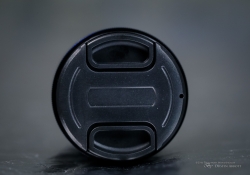
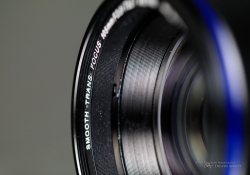
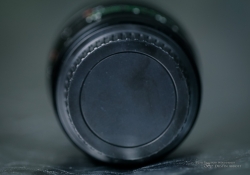
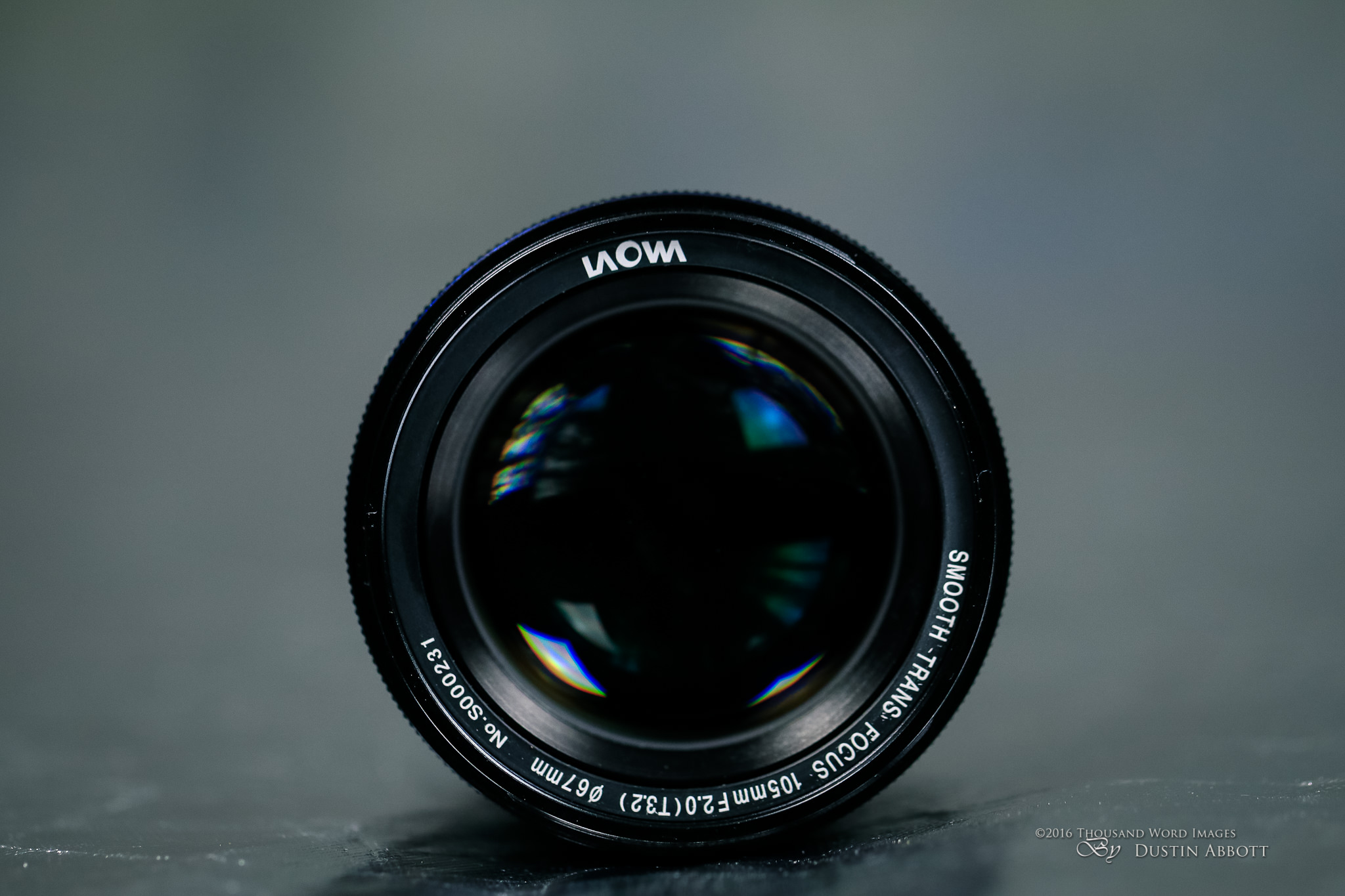
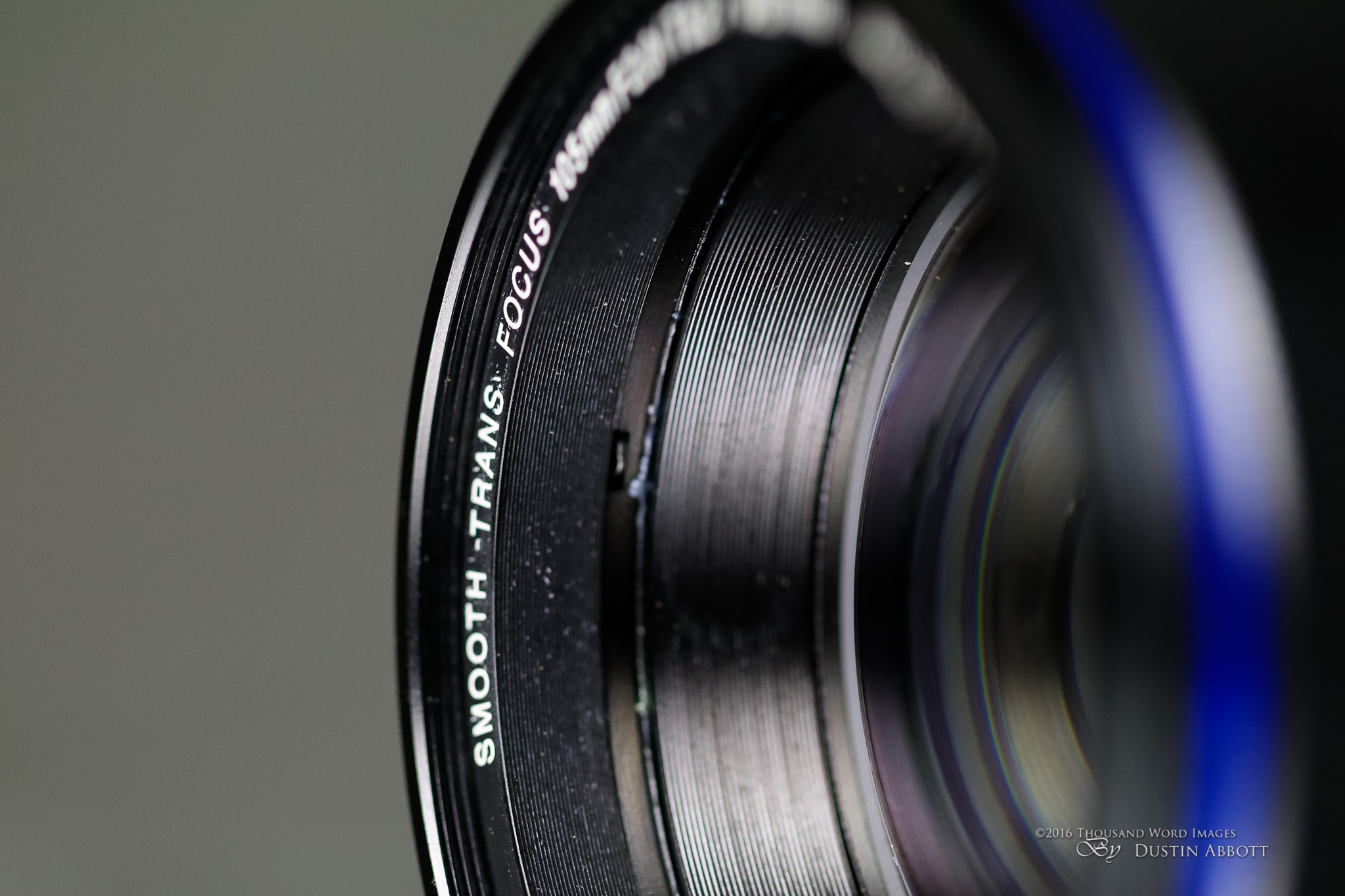
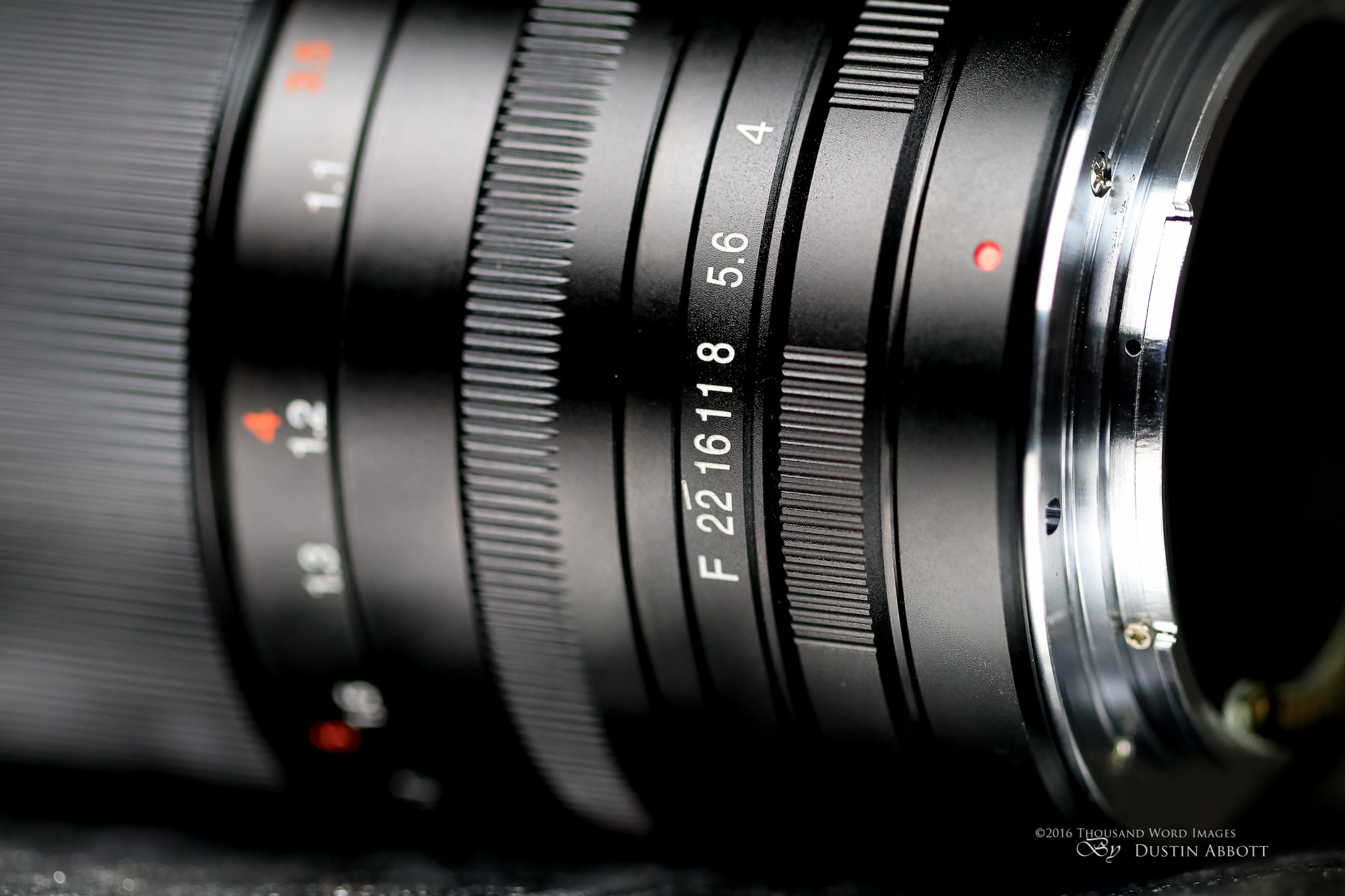
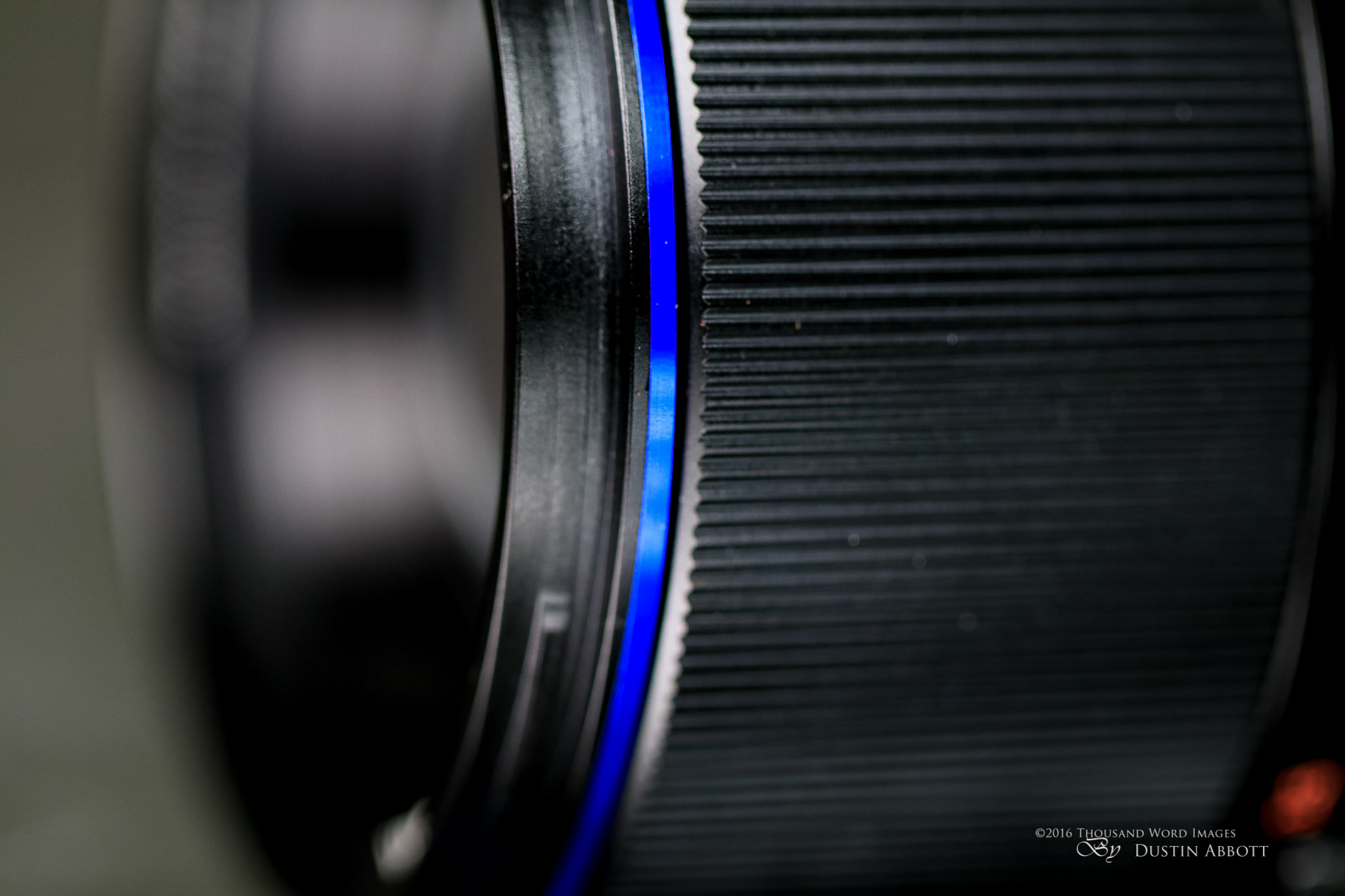
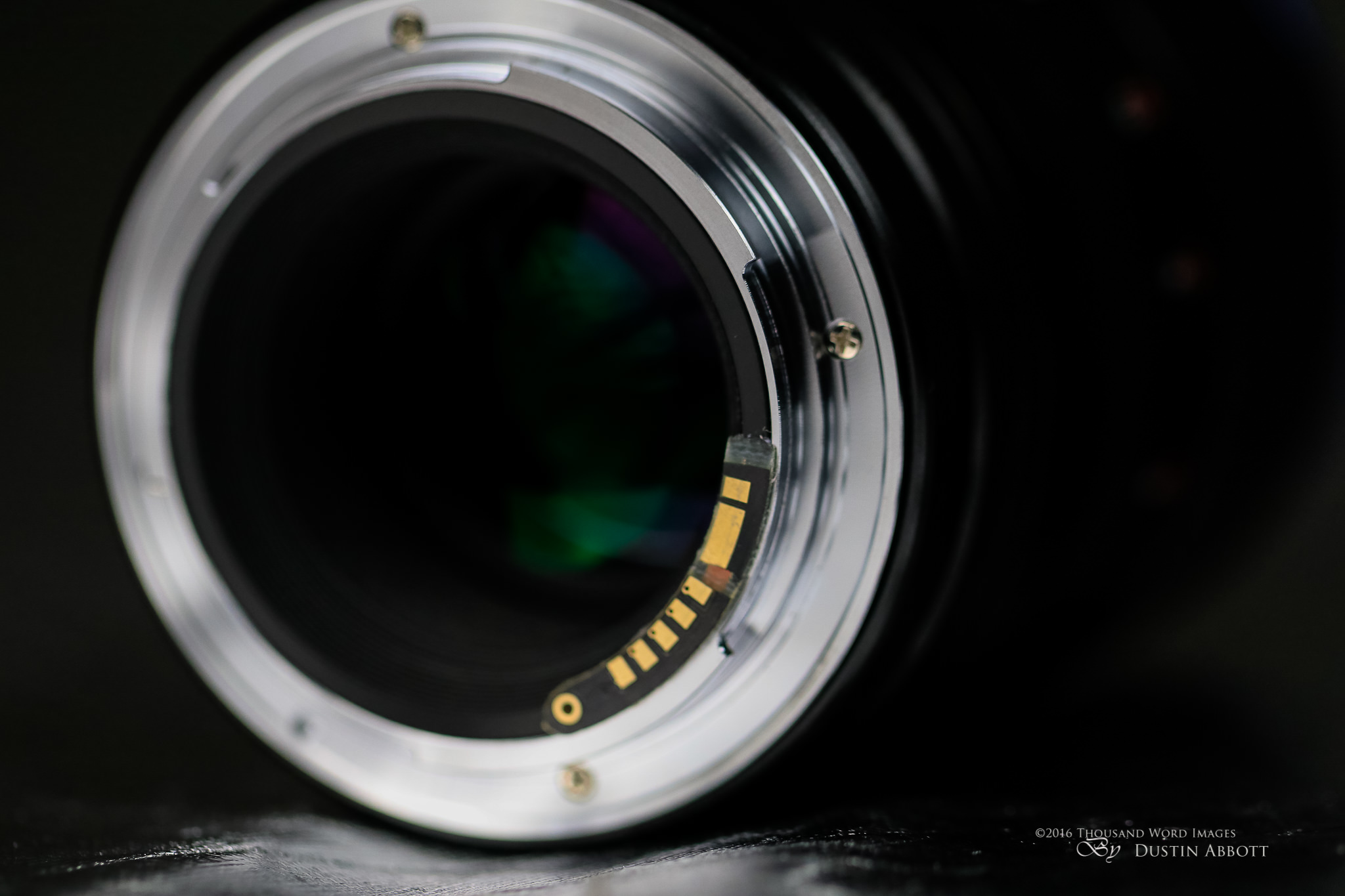
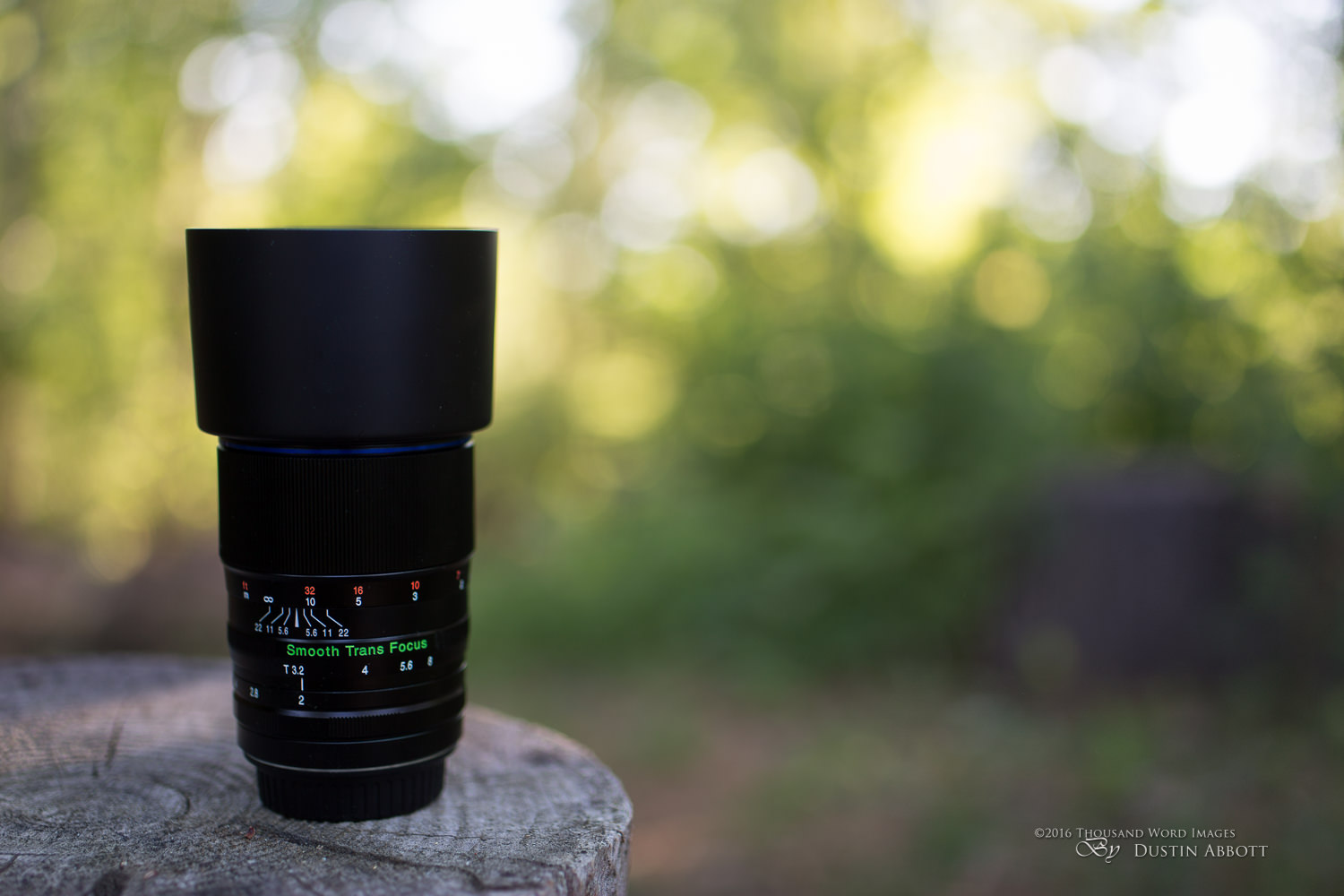

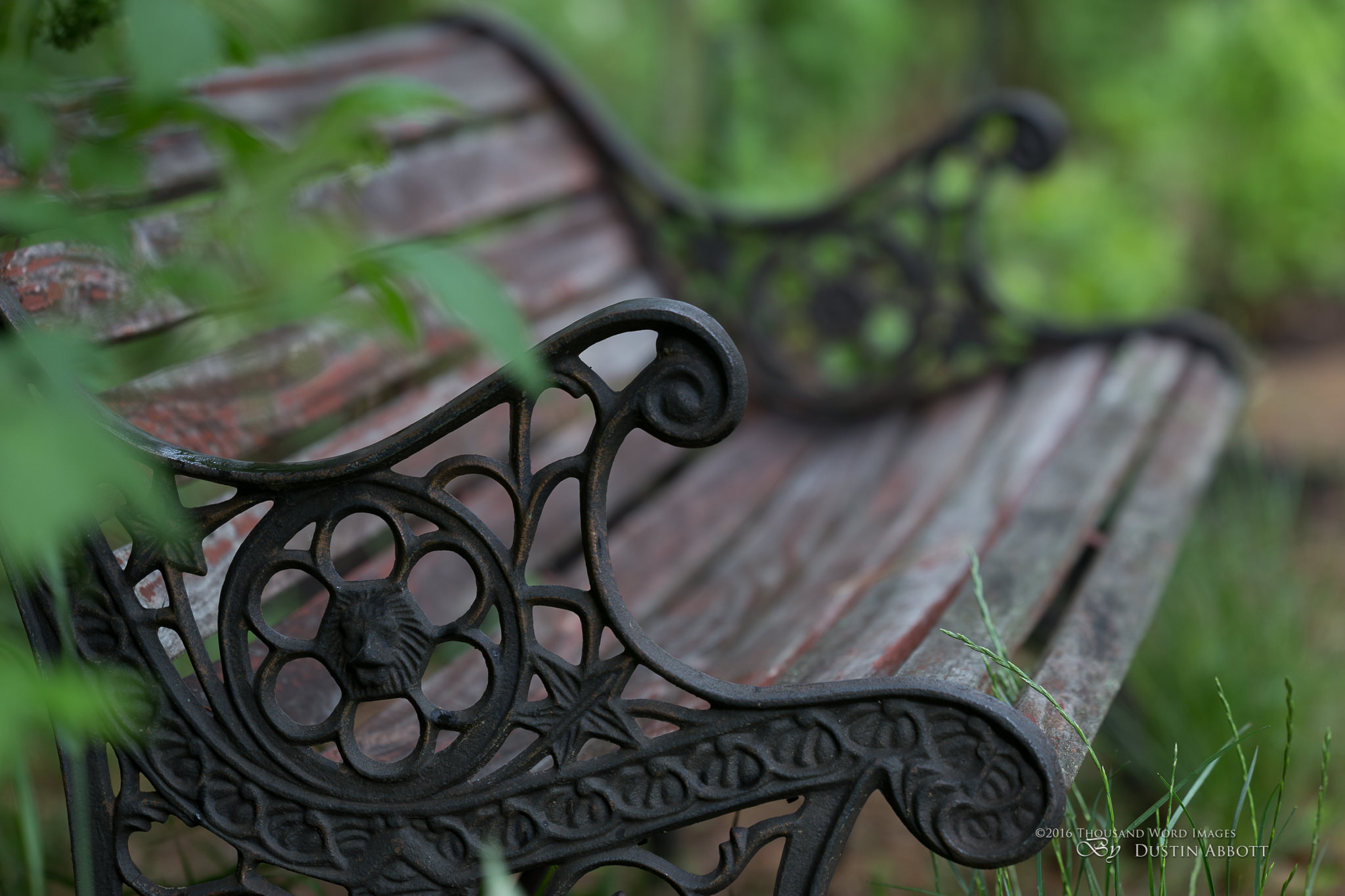
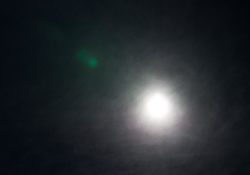
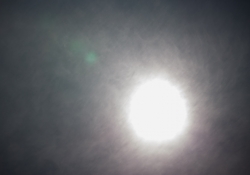

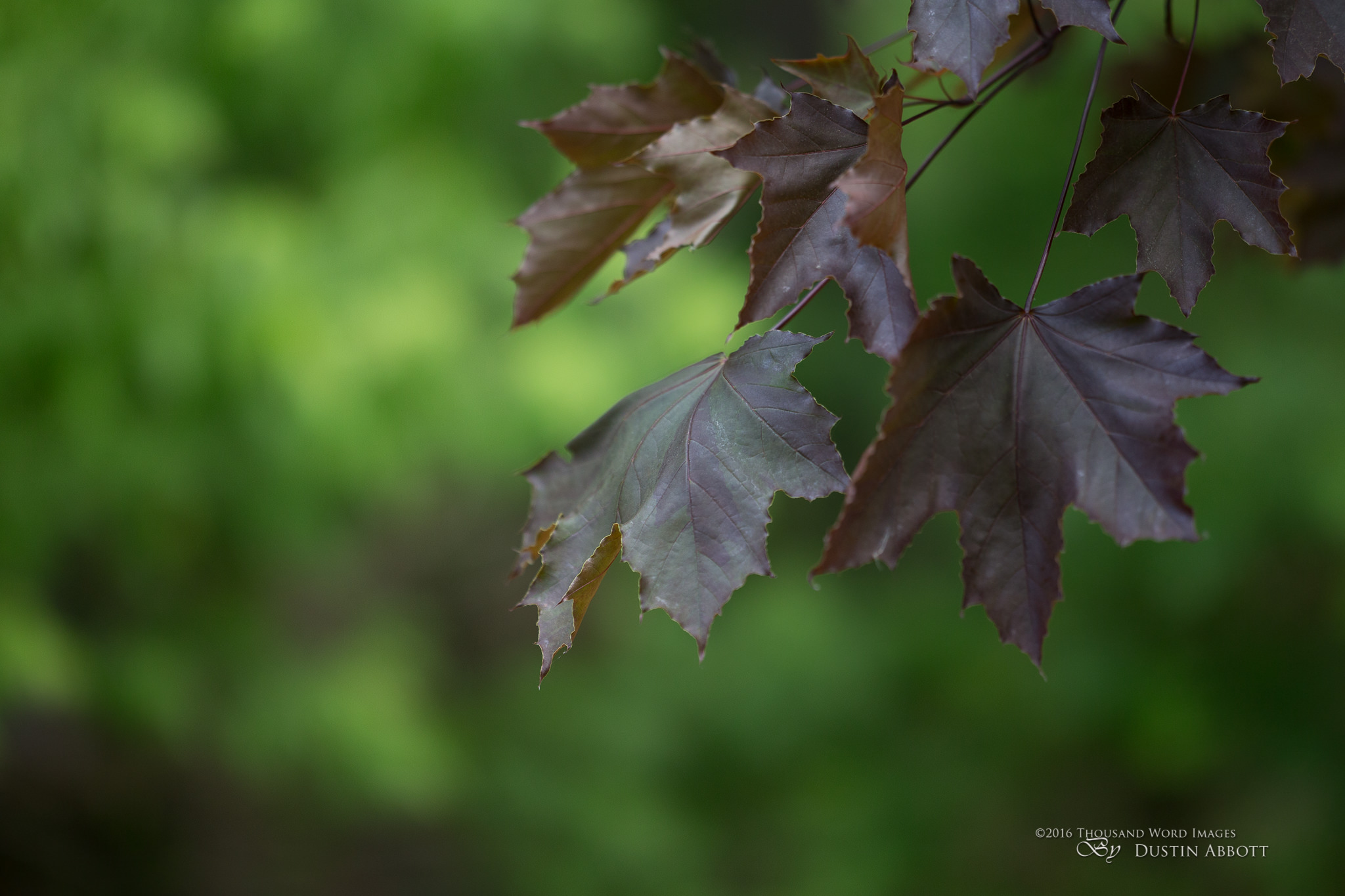
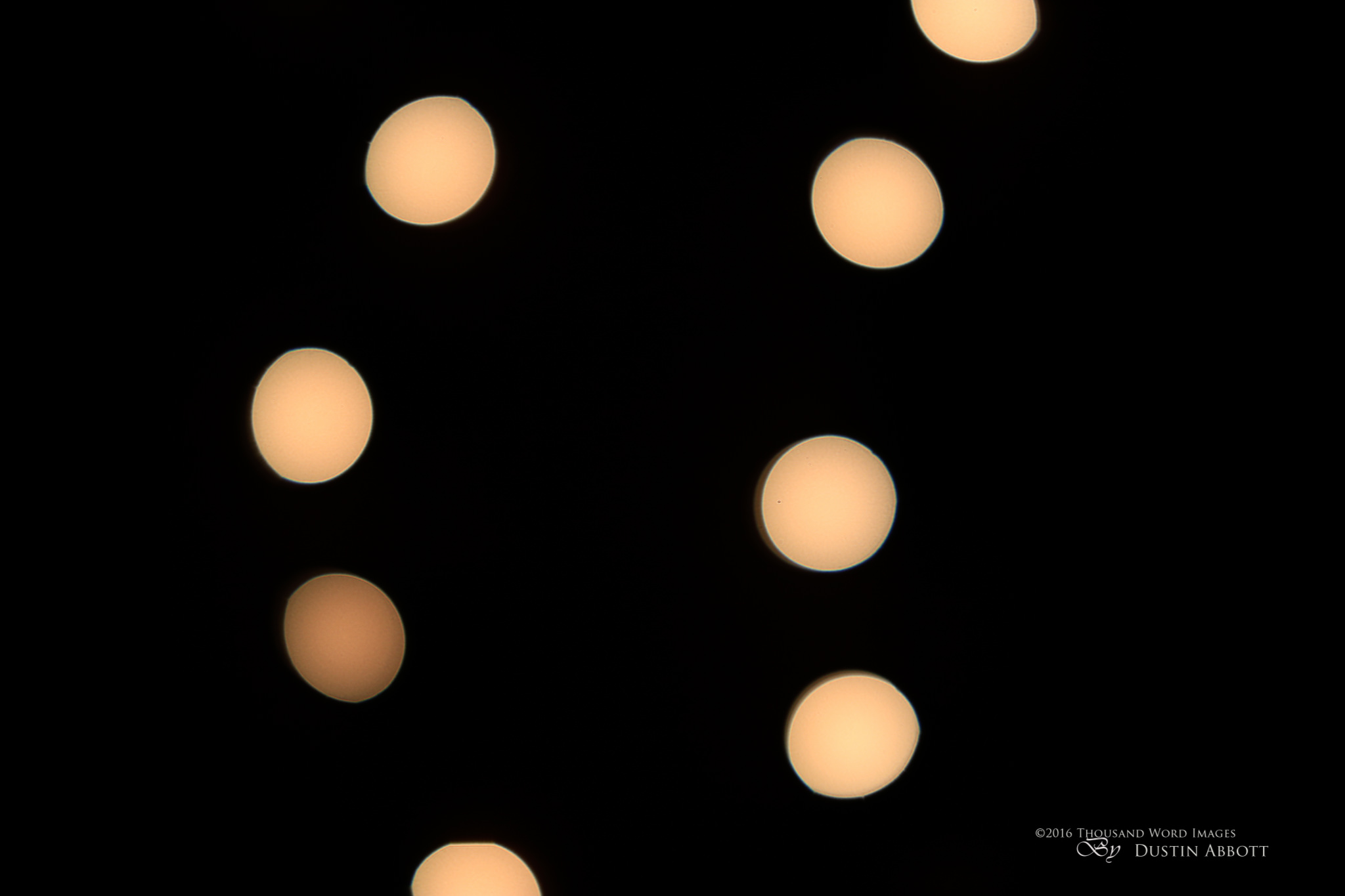
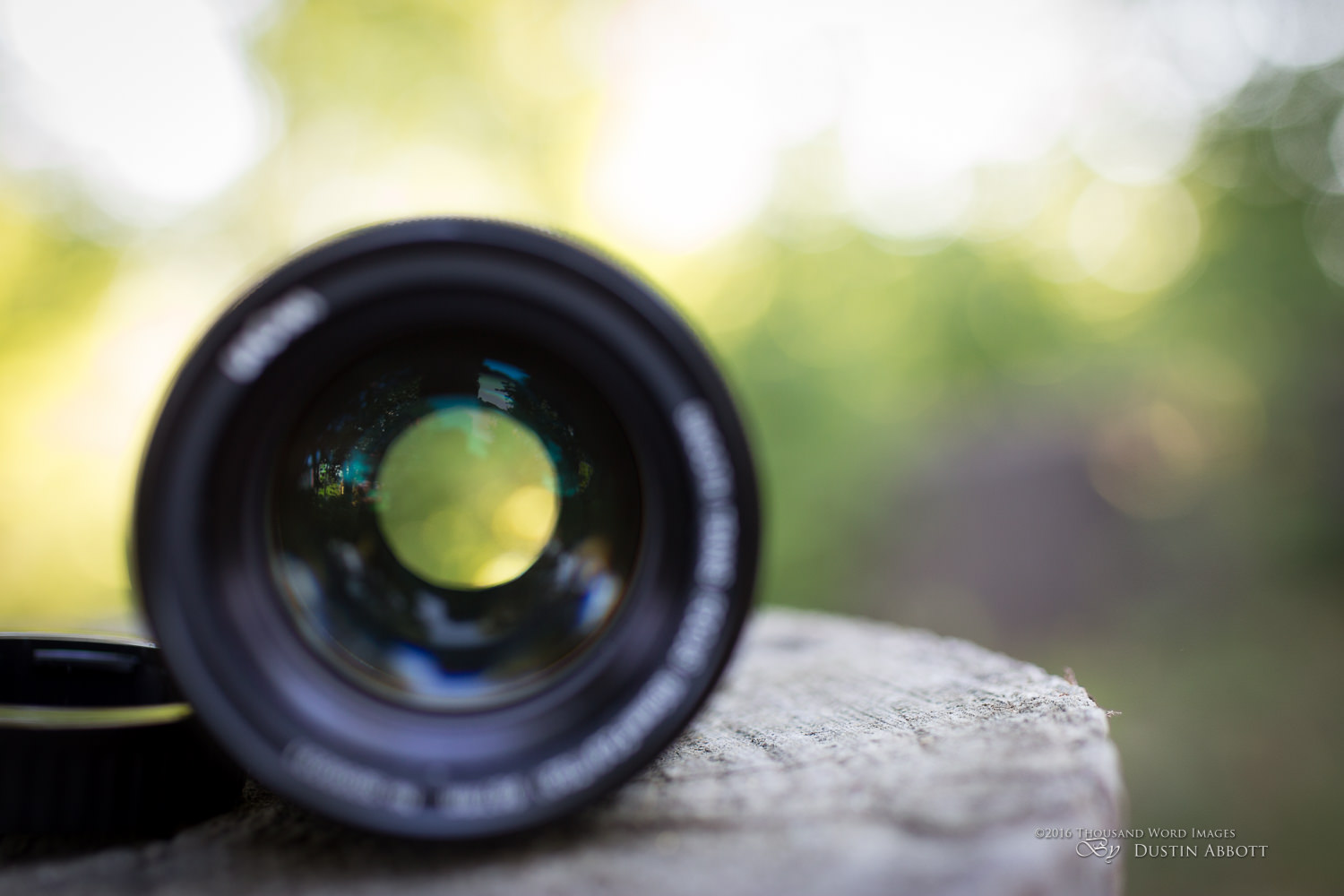





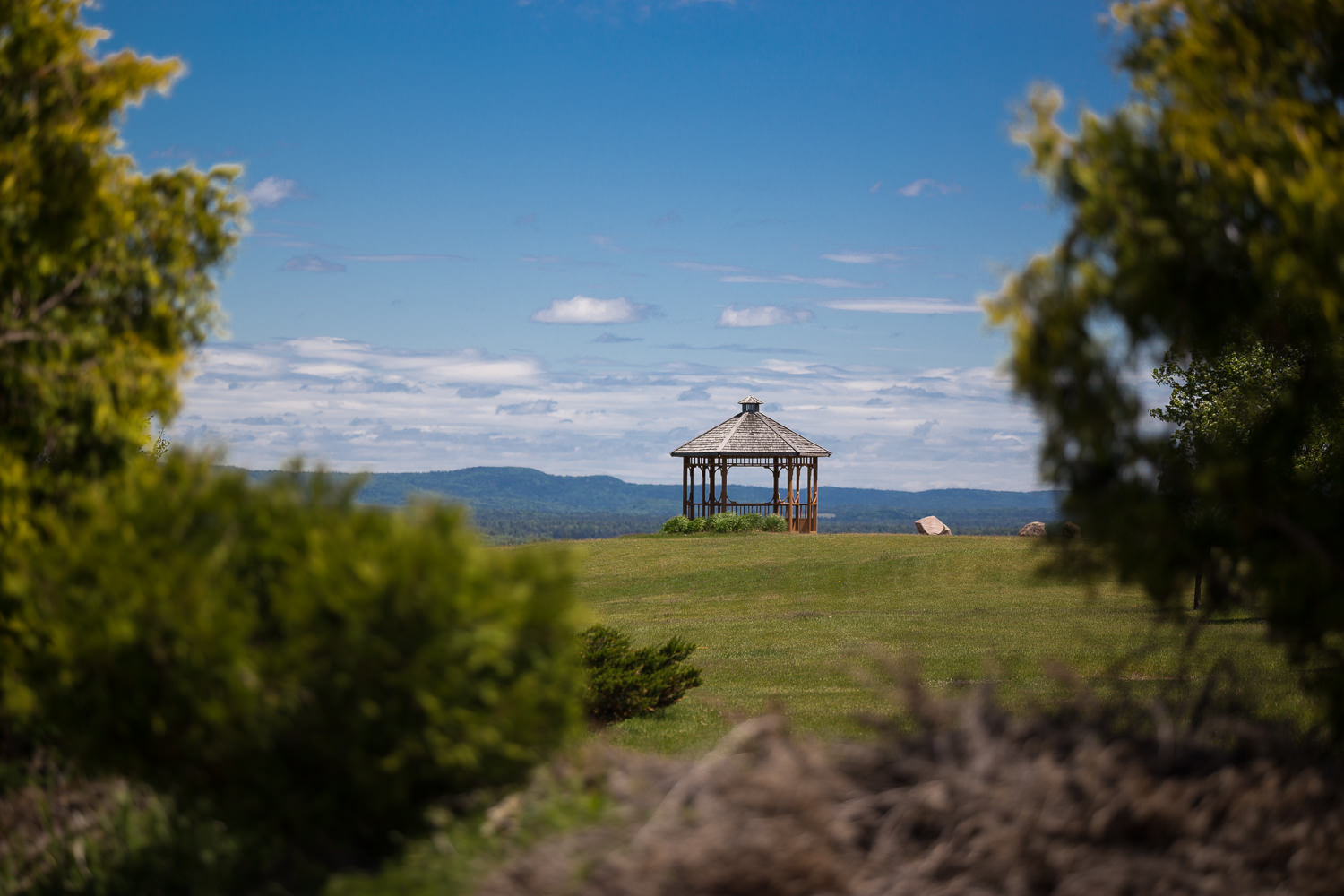
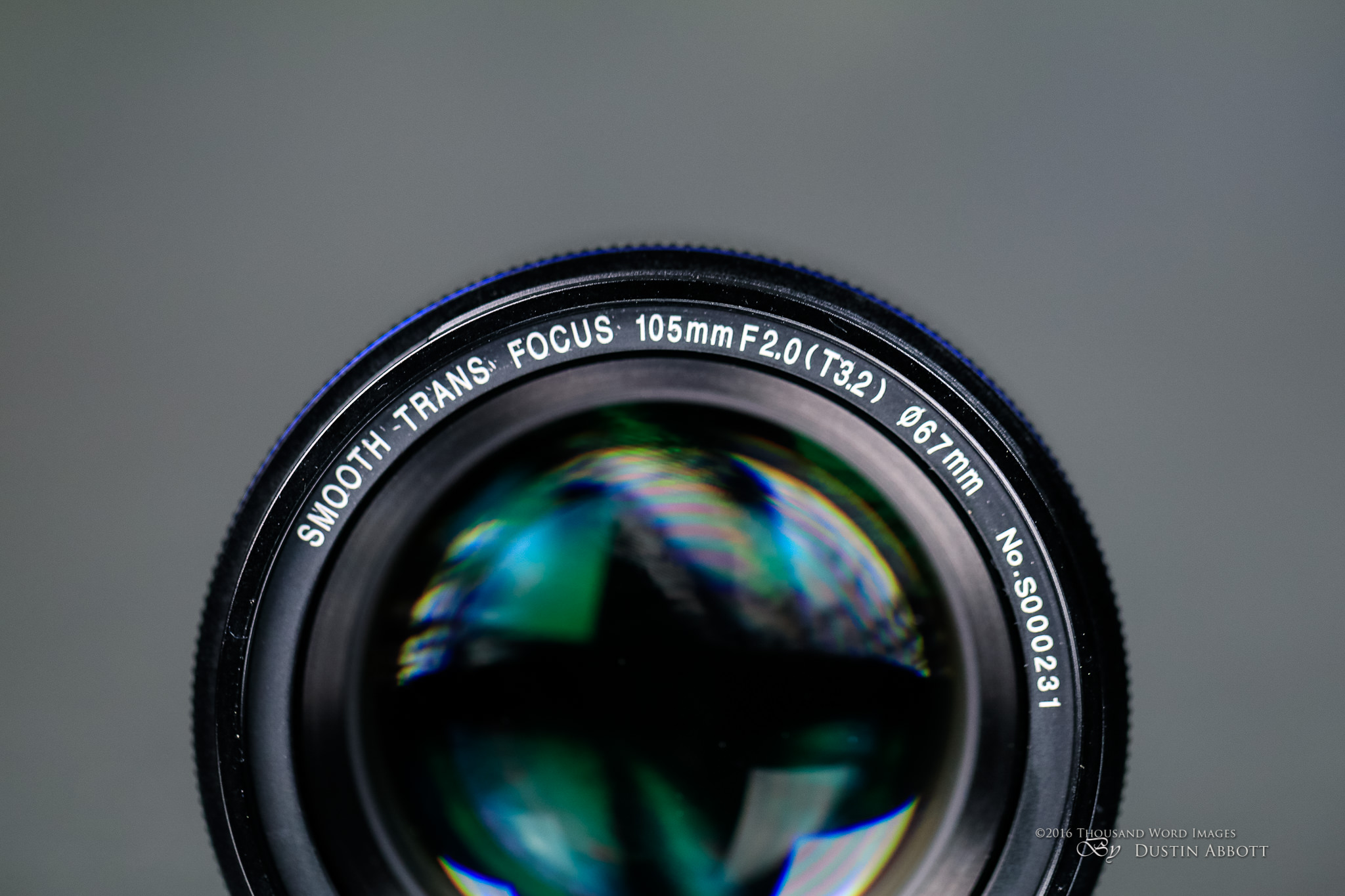

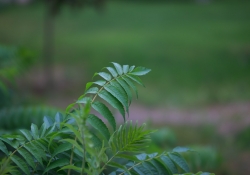




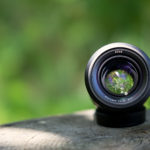
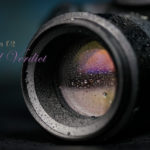

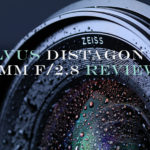






Another outstanding review!
Thank you very much!
Thank you for your review. There is a serial number: your lens’s is S000231. It’s written at the front of the lens.
As for the difference between the two apertures: you write “I found when using the STF ring that I had essentially a one stop advantage in the softness of the bokeh – T/8 was comparable to f/5.6 and so on.“. Actually the apodisation elements decreases the light transmission and creates an important difference between the two scales (more than it is the case for conventional lenses).
Moreover, the difference between f stop (geometrical aperture) and T stop (effective light transmission) is more important at bigger apertures. For instance f/2 is equivalent to T/3.2 (2.6 stops) whilst f/8 seems to be equivalent to T/11 (1.9 stops) judging by the speed chosen by you camera (1/13s for f/8 vs. 1/20s for T/8).
However, f/2 and T/3.2 correspond to the same aperture and give the same rendering (setting aside the difference in the number and shape of aperture blades). Likewise, f/8 and T/11 correspond to the same aperture and give the same rendering. It’s just two different scales to measure the same thing, like °F and °C for instance.
The Trans Focus ring only goes to T/8, which is why I reported the difference in the quality of the bokeh even though the t/stop and f/stop setting values (shutter speed) align as you stop the lens down.
I didn’t see where you list the MFD for the lens…what is it? Thanks. Great review Dustin!
I found it in the specs at B&H…2.95′ or 90cm…
Cool review, Dustin. I’ll be reviewing my copy sometime in the next month or so. Seeing a lot of the same you are noticing (good and bad), but overall it’s a hell of a lens, and will definitely replace my Nikon 105mm 1.8 ai-s. Nice on getting featured by Venus Optics on their site, too. 😉
Thanks for the feedback, Matthew. I didn’t even know I was featured there 🙂